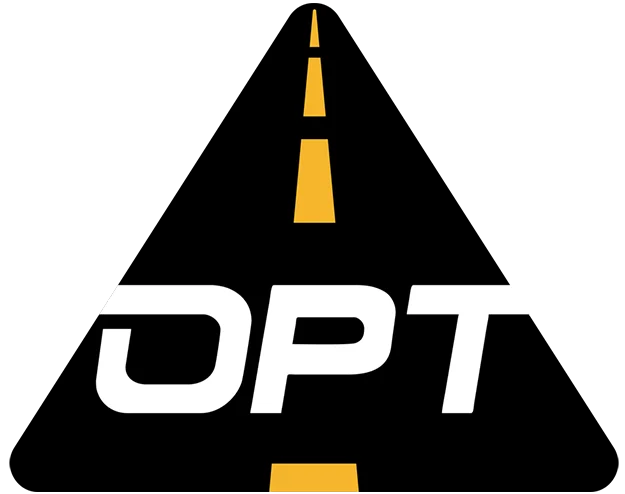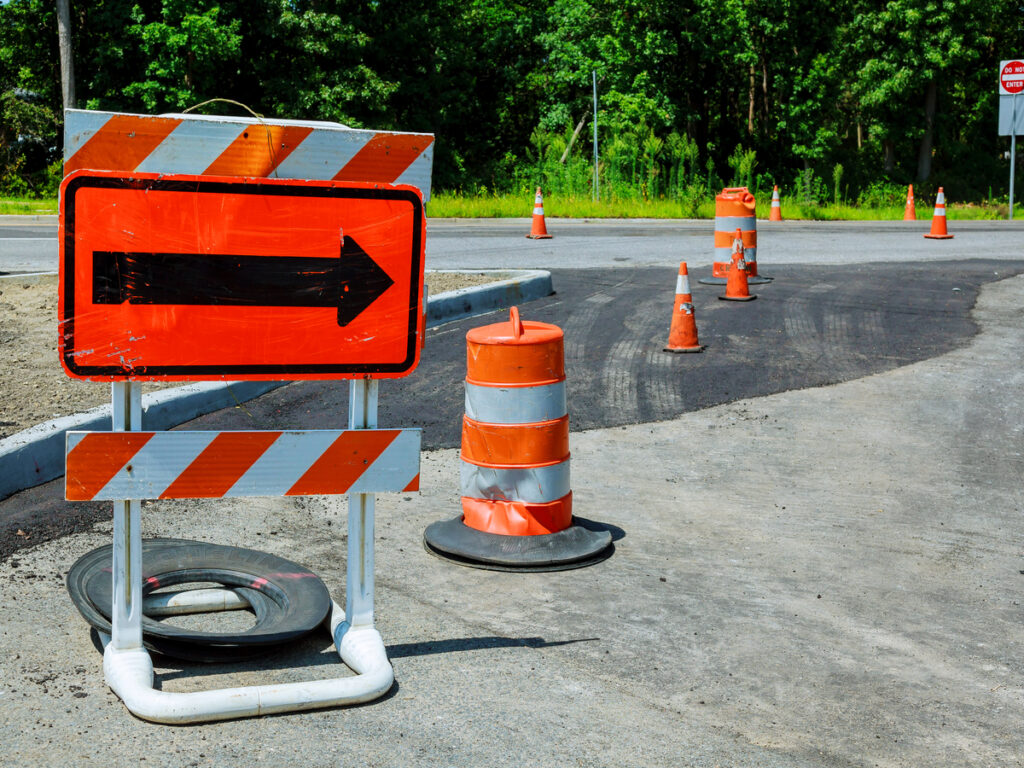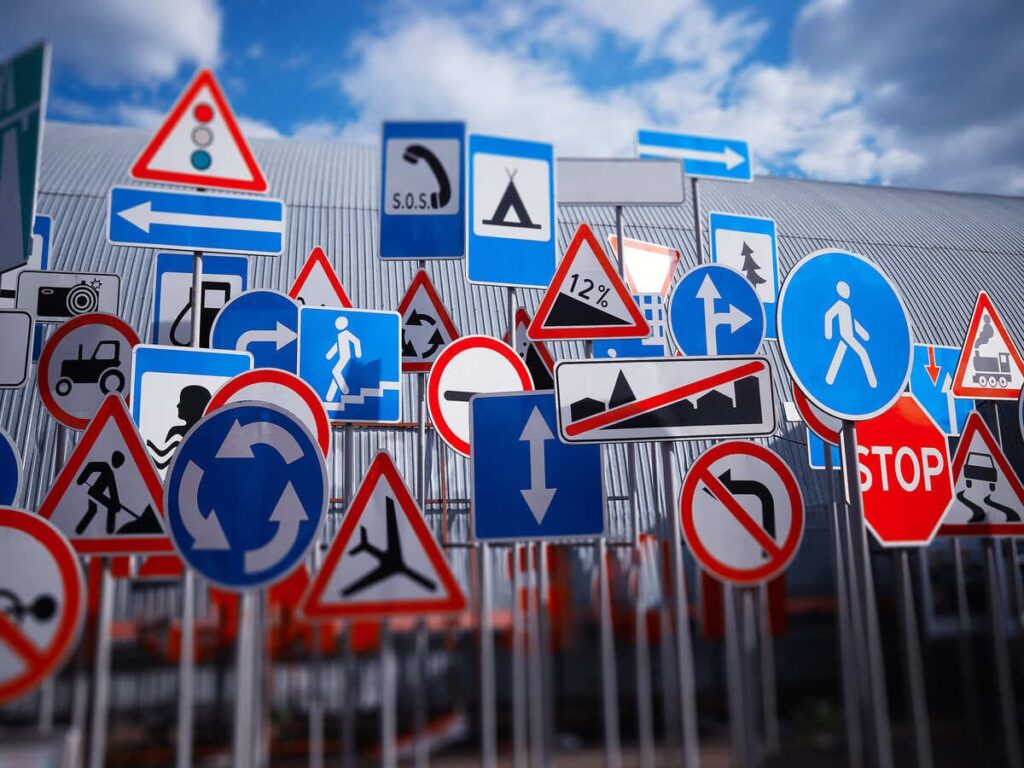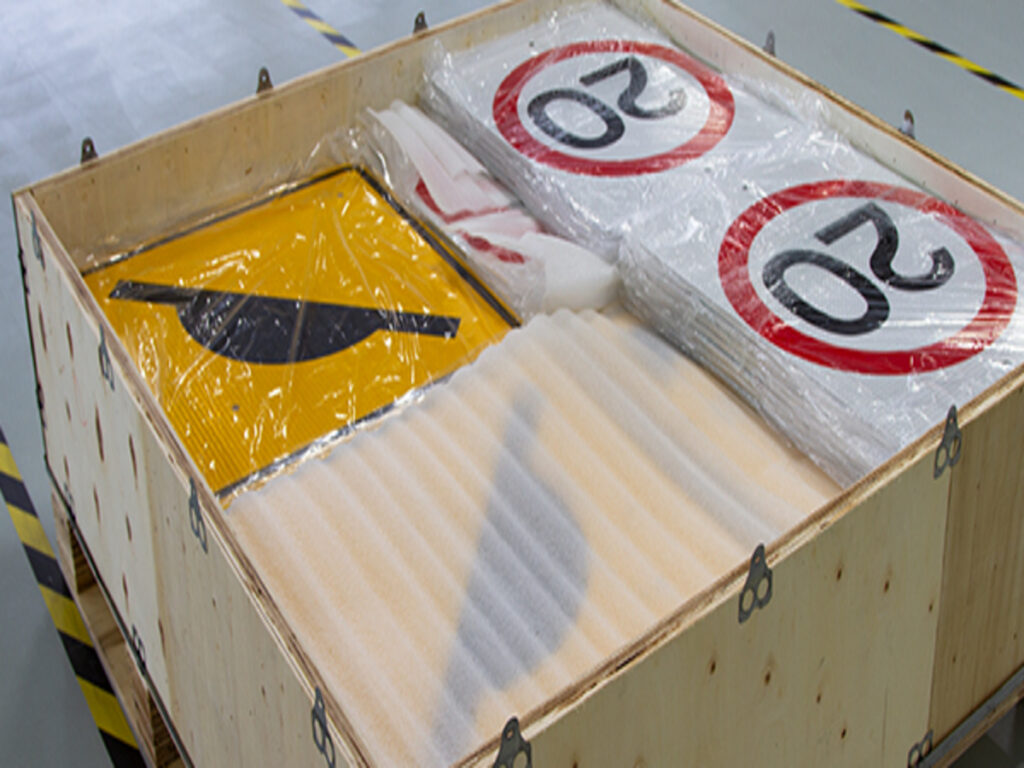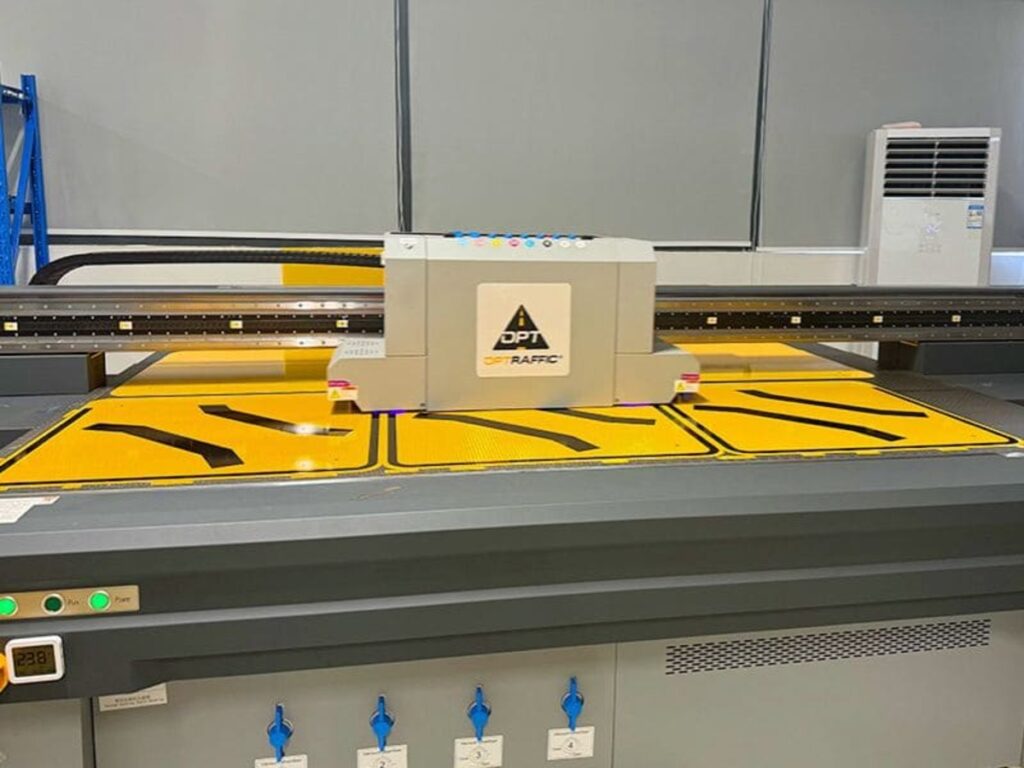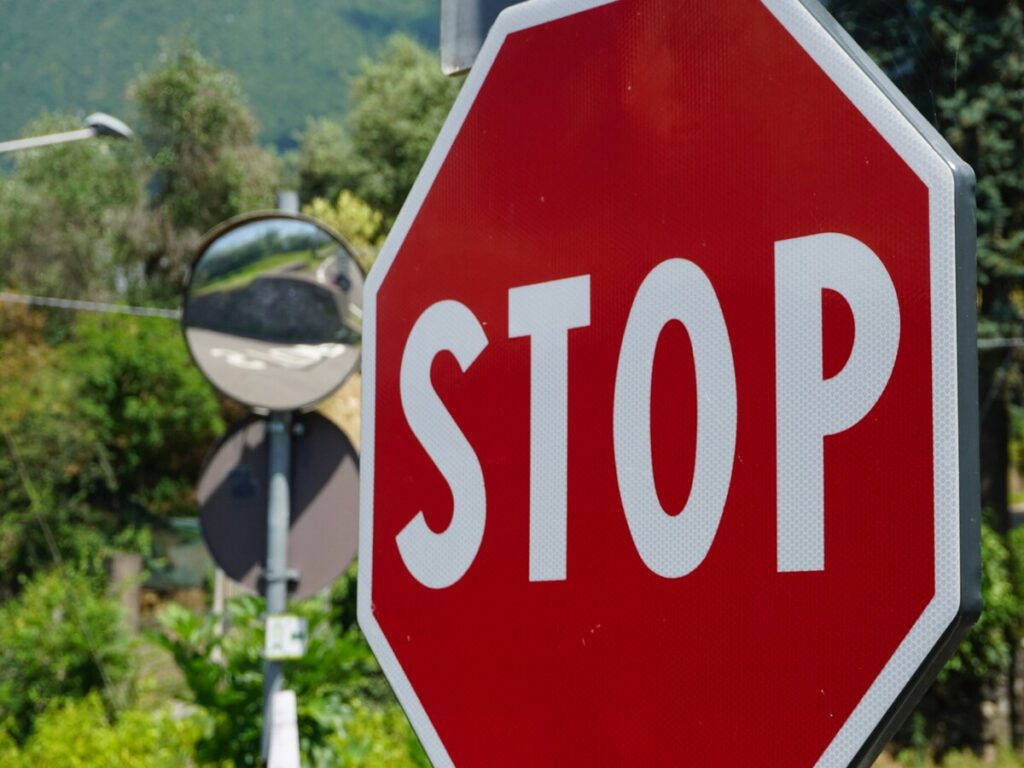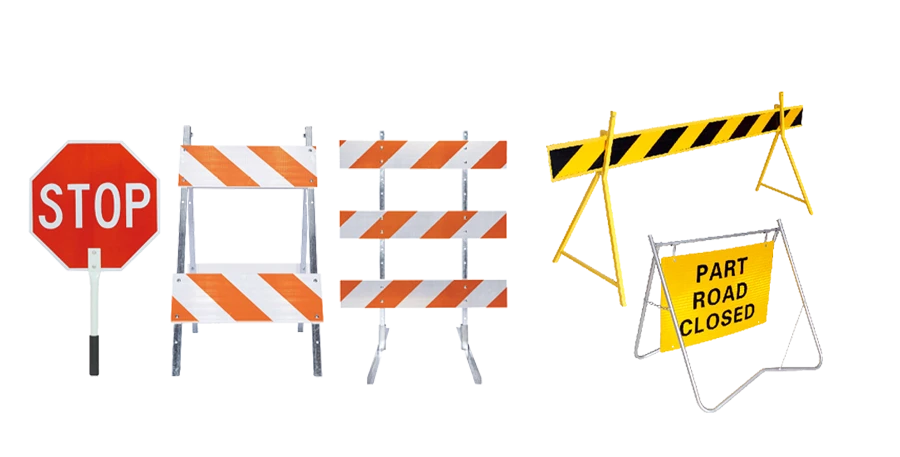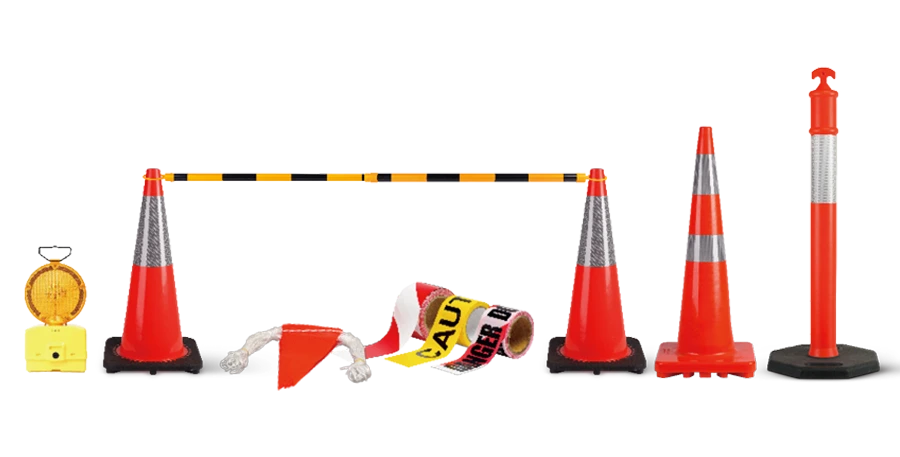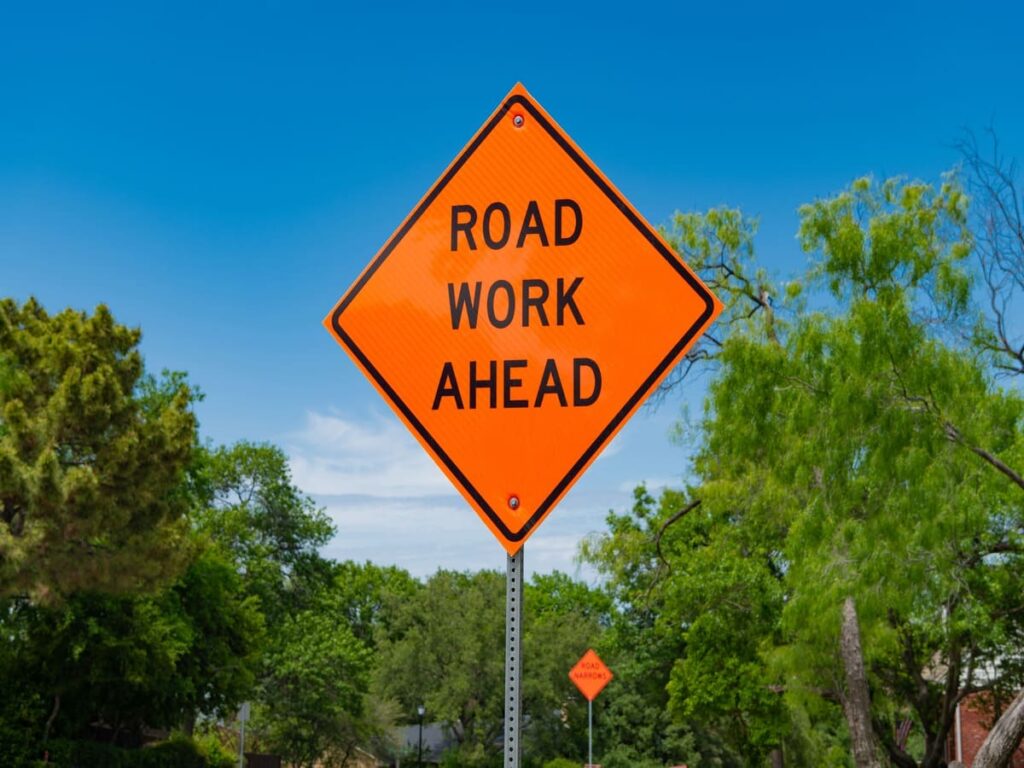
Organizations can solve budget and inflation problems by implementing smart planning and maintaining transparency. They also explore innovative methods for procurement, which is crucial in the current climate. Recent statistics highlight the urgency of this issue:
| सांख्यिकीय | कीमत |
|---|---|
| Traffic fatalities increase from a decade earlier | 25% |
| Total cost of fatal and serious crashes in 2023 | $1.85 खरब |
| Economic costs included in the total | $460 अरब |
| Quality-of-life costs included in the total | $1.4 खरब |
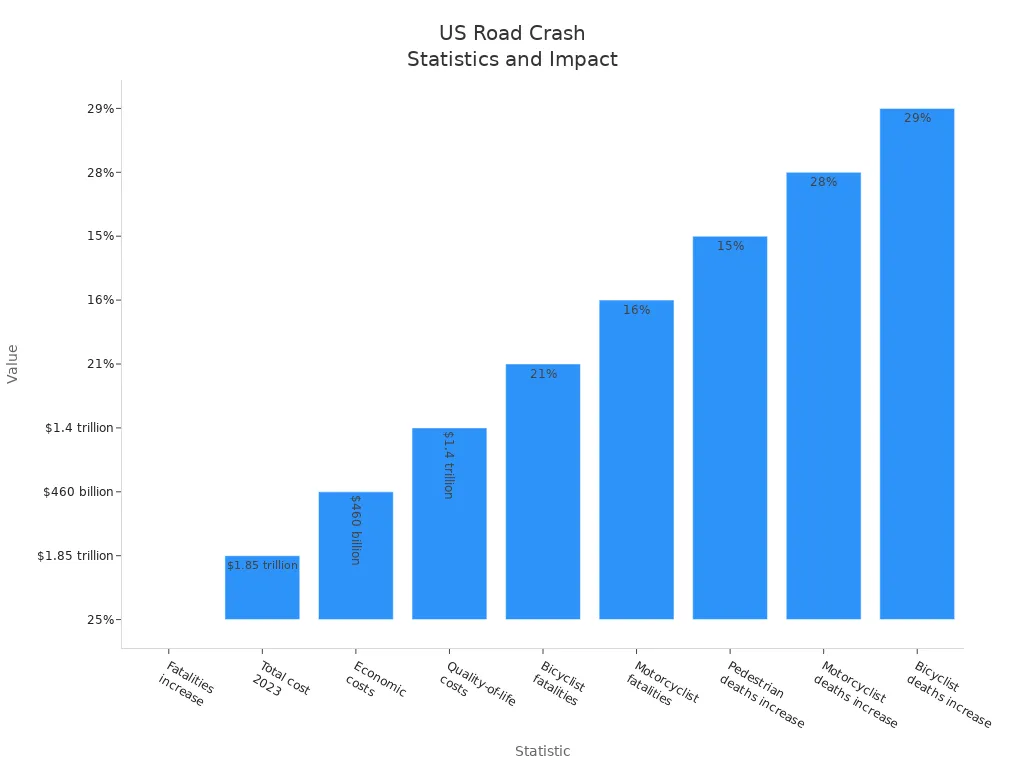
To effectively manage traffic sign cost and avoid project delay, agencies are increasingly turning to smart inventory planning and data-driven procurement strategies. Leading companies in the field are collaborating with all stakeholders to improve transparency, adapt to the current economic environment, and optimize the allocation of resources. By focusing on these strategies, organizations can not only manage costs more effectively but also ensure the timely deployment of crucial traffic control devices.
पर ऑप्टट्रैफ़िक, we provide a complete solution by offering factory-direct traffic signs. Our bulk purchasing options give us the ability to pass on significant cost savings to our customers. इसके अतिरिक्त, we supply परिवर्तनीय संदेश संकेत (वीएमएस) and a wide range of other traffic control products, making us a एक बंद दुकान for all your traffic management needs. This approach ensures both cost-efficiency and timely deployment of essential traffic safety equipment.
Traffic Sign Cost Trends
Impact of Inflation on Traffic Sign Costs
Historical Trends in Traffic Sign Costs
Traffic sign cost has changed a lot in ten years. Agencies used to pay steady prices for steel and aluminum. अब, prices have gone up quickly. में 2020, building costs started rising. द्वारा 2025, costs were about 40% higher. New tariffs and supply chain problems caused this jump. अमेरिका. added a 25% tariff on steel and aluminum in February 2025. Every traffic sign project felt the impact. Local companies had to pay more. The price of materials kept changing.
टिप्पणी: Tariffs meant to help U.S. factories often make local projects cost more. Agencies need to change how they buy supplies because of these price changes.
Recent Data on Traffic Sign Cost Increases
Traffic sign cost depends on many things. Material prices, worker pay, and shipping fees all matter. के बारे में 60% हम में से. aluminum comes from Canada. Tariffs on Canadian aluminum made getting supplies harder and raised costs. The Inflation Reduction Act tries to help U.S. aluminum makers. But changing tariff rules and less funding make prices go up and down.
| वर्ष | Construction Cost Increase | Major Cause |
|---|---|---|
| 2020 | +15% | Pandemic, आपूर्ति श्रृंखला |
| 2023 | +30% | शुल्क, labor shortages |
| 2025 | +40% | शुल्क, cost inflation |
Agencies must watch these changes closely. They should plan for higher traffic sign cost in the future. They also need to find new ways to save money.
Budget Constraints in Road Safety Projects
Government Funding Issues
Many road safety projects have tight budgets. Agencies do not get enough money. It is hard to find extra funds. The COVID-19 pandemic made planning harder. Other needs often stop new spending on traffic sign cost.
- Not enough money for road safety projects
- Hard to get more funds because of other needs
- UNRSF gives only $4 हर साल मिलियन, साथ $500,000 max per project, but requests are over $100 दस लाख
Project Delays Due to Rising Traffic Sign Cost
Higher traffic sign cost causes project delays. Agencies must wait for more money or do less work. Delays can make roads less safe for drivers, वॉकर, और बाइकर्स. When costs rise faster than budgets, safety upgrades slow down.
Agencies should focus on the most dangerous places and use data to decide how to spend money. This helps them handle rising costs and keep important projects moving.
Procurement Challenges in Traffic Sign Deployment
Supply Chain Issues Affecting Sign Procurement
Material Shortages
Traffic sign deployment has big problems when supplies run low. Agencies have to wait when steel, अल्युमीनियम, or concrete are hard to get. कभी-कभी, things happening around the world slow down factories and shipping. Ships can get stuck at ports for weeks. These problems make agencies change their project plans and budgets. When material prices go up, it is harder to buy what they need. कभी-कभी, people argue about fixed-price contracts when prices change a lot. Small suppliers might run out of money and close. Agencies need to plan well so they do not spend too much and can keep working.
- Not enough workers makes things even harder. Construction teams cannot always find skilled people. Paying workers more makes projects cost more. Agencies need to think about these costs when they plan. Inflation means they must change budgets and schedules to keep up.
- The world supply chain crisis made important materials cost more. Agencies sometimes spend too much and must wait to buy things. Careful planning is needed to solve these problems.
Increased Labor Costs
Not enough workers and higher pay make traffic sign projects harder. Agencies have to fight for good workers. Paying more makes the whole project cost more. Agencies need to watch what is happening with jobs and pay. If they cannot hire fast, परियोजनाएँ धीमी हो गईं. Agencies must think about both worker and material costs. When both go up, it is even harder to manage projects.
- When supplies or workers are missing, परियोजनाएँ धीमी हो गईं. Agencies need to act fast when things change. Inflation means agencies must be ready to change their plans.
Navigating Regulatory Complexity
Compliance with MUTCD Standards
Rules make traffic sign buying harder. Agencies must follow the समान यातायात नियंत्रण उपकरणों पर मैनुअल (MUTCD) मानकों. ये नियम सुनिश्चित करते हैं कि संकेत देखना आसान है, पढ़ना, and reflect light at night. Signs must be put in the right places to keep people safe and follow the law. Agencies spend time and money to meet these rules. Inflation makes it cost more, especially when materials and workers cost more.
| मांग | विवरण |
|---|---|
| दृश्यता | Signs must be easy to see in all kinds of weather. |
| स्पष्टता | Words on signs must be clear and easy to read from far away. |
| पुनर्मिलन | Signs must shine back light at night so drivers can see them. |
| उचित स्थान | Signs must be put where the rules say, to follow traffic laws. |
- Regulatory signs tell people the rules. चेतावनी संकेत ड्राइवरों को खतरों के बारे में बताते हैं. Guide signs help people find their way. Agencies must make sure every sign follows MUTCD rules.
Meeting Safety Standards in Traffic Sign Deployment
Following safety rules is hard for teams that buy signs. Agencies must plan well so projects do not get delayed. Checks and audits can slow things down if something is wrong. Safety steps often cost more than first thought. Inflation makes it even harder to plan for these costs. If agencies do not follow the rules, they could get fined or sued. Good planning helps agencies follow safety rules and not spend too much.
- More planning time can slow down projects. Checks can stop work for a while. Safety steps can make projects cost more than planned. Agencies must fix these problems to keep roads safe and signs working well.
Cost-Efficient Solutions for Traffic Sign Procurement
Prioritizing High-Risk Areas for Sign Deployment
Data-Driven Decision Making for Sign Placement
Transportation agencies use data to pick where signs go. They collect facts about speeding and crash spots. People living nearby share their thoughts about problem places. Agencies check street design and look for risky areas. They use digital tools like smart sensors or warning signs. Teams start with small projects and see how they work. If things go well, they do more of the same. This helps agencies spend money where it helps most.
Agencies that use data and feedback can find dangerous spots and stop crashes before they happen.
Compliance with MUTCD Guidelines in High-Risk Zones
Agencies must follow MUTCD rules when putting signs in risky places. These rules make sure signs are easy to see and read. Agencies use new ways to find places with lots of crashes. They put up better signs in these spots to help keep people safe. Speeding causes many bad crashes, so signs in fast areas are important. Agencies use data and rules to decide where to put signs. This helps lower accidents and keeps people safe.
Leveraging Bulk Purchasing for Cost Savings
Volume Discounts for Traffic Sign Purchases
Buying lots of signs at once saves money. A city in Texas saved 20% by buying signs in bulk. A company in New York saved 15% by buying many साइन फ्रेम्स तुरंत. Big orders mean lower shipping costs and better deals with suppliers. Agencies can avoid waiting and plan better by buying in bulk. This helps them use their money wisely and get more done.
Long-Term Contracts with Traffic Sign Suppliers
Long-term contracts with sign suppliers offer agencies several benefits, but also come with some challenges. Here’s a summary of the advantages and disadvantages:
Advantages of Long-Term Contracts:
- Cost stability: Helps avoid price fluctuations.
- Predictable supply chain: Ensures reliable delivery of materials.
- Stronger partnerships: Builds long-term relationships with suppliers.
- Budget management: Makes it easier to plan and allocate funds.
- No rising prices: Protects against unexpected price increases.
- सुरक्षा: Provides consistent supply of products.
- Elimination of renewal fees: Saves costs on frequent contract renewals.
- समय कौशल: Reduces the need for constant renegotiation.
- Storage fee savings: Enables bulk buying and storage of materials.
Disadvantages of Long-Term Contracts:
- Reduced flexibility: Limits ability to switch suppliers or adjust terms.
- Market shifts: Inflexible to changes in the market.
- Supplier dependency: Relies on a single supplier, which could be risky.
- Compliance and regulation risks: Must ensure contract terms align with legal standards.
- Exit challenges: Can be difficult and costly to break the contract.
Long-term contracts help agencies save money and plan effectively, but they require careful consideration of regulations and the potential loss of flexibility. Agencies should balance the benefits with the need for adaptability in an ever-changing market.
Exploring Alternative Materials
Benefits of Reflective Coatings
चिंतनशील कोटिंग्स रात में देखने के लिए संकेतों को आसान बनाते हैं. These coatings help drivers read signs in the dark. New reflective technology has made roads safer and saved money over time. Ceramic beads make signs shine more, इसलिए ड्राइवर उन्हें दूर से देखते हैं.
Implementing Smart Traffic Signs for Long-Term Savings
Smart traffic signs use sensors and screens to change with traffic. These signs help traffic move better and lower crash costs. Agencies use smart materials like LED lights to keep signs bright in bad weather. Signs made from recycled plastic last longer and cost less. Smart cones with sensors warn drivers in work zones. This makes roads safer and cuts down on accidents.
Embracing Technology for Traffic Sign Management
Asset Management for Cost Control
Using Software Tools for Traffic Sign Tracking
Agencies use software to keep track of traffic signs. These tools show where each sign is and when it needs work. भवन सूचना मॉडलिंग (बीआईएम) stores details like who made the sign and when it needs fixing. इस तरह, agencies can plan repairs before problems happen. Lifecycle planning helps teams know how much signs will cost over time. Teams pick the best way to fix signs, like checking their condition or fixing them on a schedule. Looking at the risk of old signs helps agencies decide when to buy new ones or upgrade.
Maintenance Tracking and Budgeting
Fixing signs on time saves money. Spending one dollar on early repairs can save seven dollars later. Maintenance software tells teams when signs need cleaning or fixing. Agencies set budgets for these jobs and watch spending closely. This stops big surprises and keeps roads safe. Teams use different ways to fix signs, like checking their condition, fixing them on a schedule, or waiting until something breaks.
Planning repairs ahead of time means fewer emergencies and better control of money.
Digital Signage as a Cost-Effective Solution
Automation Benefits in Traffic Sign Management
Digital signs are flexible and can be changed easily. Agencies update messages from far away, saving time and work. Automated systems check sign status and send alerts when repairs are needed. This keeps signs working and easy to see. Digital signs can be updated often, helping people stay safe and aware.
Case Studies of Cities Using Digital Signs
| शहर | कार्यान्वयन विवरण | परिणाम |
|---|---|---|
| लॉस एंजिल्स | ATSAC system with over 4,850 adaptive traffic signals, adjusting in real-time. | Intersection delays dropped by 32%, citywide emissions decreased by 3%. |
| सैन होज़े | AI-powered signal priority system prioritizing buses, aligning with transit-first policy. | Bus travel times cut by over 50%, VTA bus ridership increased by 15% as of early 2024. |
| Oakland | AI-powered cameras for bus lane enforcement, monitoring violations. | Flagged over 1,100 violations, के लिए अग्रणी 787 citations, a significant increase from previous methods. |
Digital signs cost more at first than regular signs, लेकिन वे बाद में पैसे बचाते हैं. The table below shows the costs and benefits:
| पहलू | Digital Signage | पारंपरिक संकेत |
|---|---|---|
| आरंभिक निवेश | $1,300 को $6,500+ | $260 को $1,300 |
| Operating Costs | $130 को $1,300 प्रतिवर्ष | न्यूनतम, mainly cleaning/repairs |
| प्रभावशीलता | Boosts awareness by 47% | Less engaging |
| लागत पर लाभ | High for frequent updates | Lower long-term ROI |
Enhancing Spend Transparency
Real-Time Tracking of Traffic Sign Expenses
Tracking budgets in real time helps teams see what they spend. Teams check budgets before buying things, so they do not spend too much. This lets them fix problems right away if spending goes off track. Leaders watch spending live and change plans fast.
- Fewer delays and reversals: Requests over budget get flagged upfront.
- More control for budget owners: Leaders monitor expenses in real time.
- Approvals that move: Clear data speeds up decision-making.
Best Practices for Reporting and Monitoring Procurement Costs
- Train Employees for Maximum Efficiency: Agencies teach staff to use buying tools well, so they work faster.
- Continuously Monitor and Optimize Processes: Teams check buying steps often to find and fix issues.
Being open builds trust and stops cheating. It helps people compete, brings new ideas, and gives better deals. A clear process makes things fair and open for everyone.
Overcoming Organizational Barriers in Traffic Sign Procurement
Implementing Effective Change Management Strategies
Training Programs for Staff on New Procurement Strategies
Transportation agencies sometimes have trouble when they try new ways to buy things. Change management helps teams get used to new ideas. Agencies use different methods to help everyone adjust:
| क्रियाविधि | विवरण |
|---|---|
| ADKAR Model | Helps workers learn, want, and remember new behaviors. |
| Kotter’s 8-Step Process | Makes people feel change is important and lets teams act. |
| Prosci’s Change Process | Has four steps: get ready, manage change, keep it going, and make it part of daily work. |
Special training programs are very important. Agencies make lessons that fit their own needs. Custom materials help people learn better. Team games help departments work together. Classes for different groups build new skills. Some agencies give lessons to other departments to get more people involved.
Readiness workshops help agencies see what skills they have and what they need. A special plan for digital tools makes switching easier.
Stakeholder Engagement in Traffic Sign Decision-Making
Getting everyone involved helps changes work better. Agencies talk to stakeholders early to build trust. They set clear goals for the changes. Teams have leaders from many departments. Temporary checks make sure rules are followed during changes.
- Agencies ask everyone for feedback.
- Working together helps find the best ways to buy things.
Overcoming Challenges with Legacy Systems
Upgrading Legacy Procurement Systems
Old systems can make it hard for teams to share data. Workers spend lots of time doing things by hand. This can cause mistakes and slow things down. When data is split up, it is hard to see how things are going. Old systems may not be safe. Buying things outside the system can cost up to 20% more and hurt the budget.
Integration of Modern Technologies with Existing Systems
Making old systems better takes careful planning. Agencies first check their old systems to see what works and what does not. They set goals like making things faster or easier to use. Tools like APIs and middleware help connect old and new systems. उदाहरण के लिए, the Social Security Administration uses an API gateway to let old and new programs work together safely. This lets agencies add new services without starting over.
Fostering Collaboration Across Agencies
Public-Private Partnerships in Traffic Sign Deployment
Public-private partnerships help agencies work faster and better. These partnerships have many good points:
| फ़ायदा | विवरण |
|---|---|
| Faster development | Getting everyone involved early means less rework and faster plans. |
| Traffic Sign Cost savings | Better talking means fewer mistakes and saves money. |
| Shared risks | Each group handles the risks they know best. |
| Improved quality | Early teamwork brings new ideas and better results. |
| Life cycle cost savings | These deals can cut costs by up to 20%. |
| Budget overrun reduction | ब्रिटेन में, budget overruns dropped by 70% with these deals. |
| Schedule overrun reduction | Using these models cut late projects by 65%. |
Cross-Agency Coordination for Better Traffic Safety Solutions
When agencies work together, सड़कें सुरक्षित हो जाती हैं. उदाहरण के लिए, a Road Safety Audit helped fix rural roads for the Standing Rock Sioux Tribal Tribe. The Iowa Traffic Safety Data Service gives crash data fast, so local governments can make safety plans without repeating work. The Missouri Coalition for Roadway Safety cut deaths by 40% by working together on a safety plan.
Agencies can overcome budget and inflation challenges by embracing transparency, adopting new technologies, and collaborating with partners. Leaders should carefully review procurement strategies to achieve better outcomes. Here are a few steps they can take:
- Select the most cost-effective purchasing method for each project.
- Estimate traffic sign costs accurately to ensure fair pricing.
- Understand federal regulations to stay compliant.
इन चरणों का पालन करके, agencies can reduce expenses and contribute to safer roads.
पर ऑप्टट्रैफ़िक, we offer high-quality road signs and स्मार्ट साइनेज समाधान that help agencies meet safety standards while staying within budget.
अक्सर पूछे जाने वाले प्रश्न
What is the main reason traffic sign costs have increased recently?
Inflation has caused a rise in the prices of raw materials (such as steel and aluminum), शिपिंग लागत, and labor expenses, which are integral to traffic sign production and deployment. The Bureau of Transportation Statistics reported in 2023 that inflation has significantly impacted operational costs, with the waterborne transportation sector seeing a sharp increase in costs related to infrastructure and logistics. नतीजतन, agencies are paying more for essential components of traffic signs and the workforce needed to produce and install them.
How does inflation impact traffic sign deployment schedules?
Inflation raises prices for both materials and labor, often exceeding budget expectations. के अनुसार South Carolina Department of Transportation (SCDOT), lane closure restrictions and road work are significantly delayed as agencies struggle to manage increased costs during peak traffic periods. These delays affect the timely installation of traffic signs, especially when funds are redirected to cover rising material costs.
Why do agencies need to adjust procurement strategies during inflation?
As material and labor costs fluctuate, procurement strategies need to be adaptive. The संघीय राजमार्ग प्रशासन (एफएचडब्ल्यूए) mandates that devices used on National Highway System projects meet specific standards, including safety crash testing for traffic control devices. Agencies are increasingly relying on bulk purchasing, long-term contracts, and alternative materials like reflective coatings or even smart signs to manage costs effectively while adhering to safety and regulatory standards.
What are the benefits of using technology to manage inflation in traffic sign projects?
Technology helps track spending and optimize resource allocation. Using software tools to monitor budget fluctuations allows agencies to adjust project scopes dynamically. उदाहरण के लिए, changeable message signs (मुख्यमंत्रियों) are becoming more widely used in response to fluctuating costs, providing real-time updates while also reducing the need for constant manual updates.
How can agencies ensure compliance with MUTCD standards during inflation?
Even with rising costs, adherence to the Manual on Uniform Traffic Control Devices (MUTCD) is non-negotiable. Agencies use data-driven approaches to prioritize high-risk areas for sign installations. इसके अतिरिक्त, some agencies are switching to more cost-effective materials that meet MUTCD requirements, such as retroreflective coatings and innovative sign designs that provide both safety and cost efficiency.
Does inflation affect the quality of traffic signs?
Inflation may push agencies to consider cheaper materials, but they must still comply with safety standards. The MUTCD and associated regulations emphasize the importance of sign visibility and durability, विशेष रूप से उच्च-ट्रैफ़िक क्षेत्रों में. Agencies are increasingly turning to technologies like reflective coatings and smart signs to ensure that the quality of signage remains high, even when costs rise.
What role do public-private partnerships play in managing inflation?
Public-private partnerships are essential in managing inflation. By collaborating with private companies, agencies can share costs and risks, leverage additional expertise, and access innovative materials or manufacturing techniques that reduce overall costs. These partnerships can also help speed up the procurement and installation process, ensuring traffic signs are deployed on time despite budget constraints.
How can agencies improve transparency in spending during inflation?
Real-time tracking and clear reporting tools enable agencies to track spending and make necessary adjustments. Transparency in spending, particularly during inflationary periods, helps build public trust and ensures that safety measures, such as traffic signs, continue to meet the needs of the community while staying within budget.
